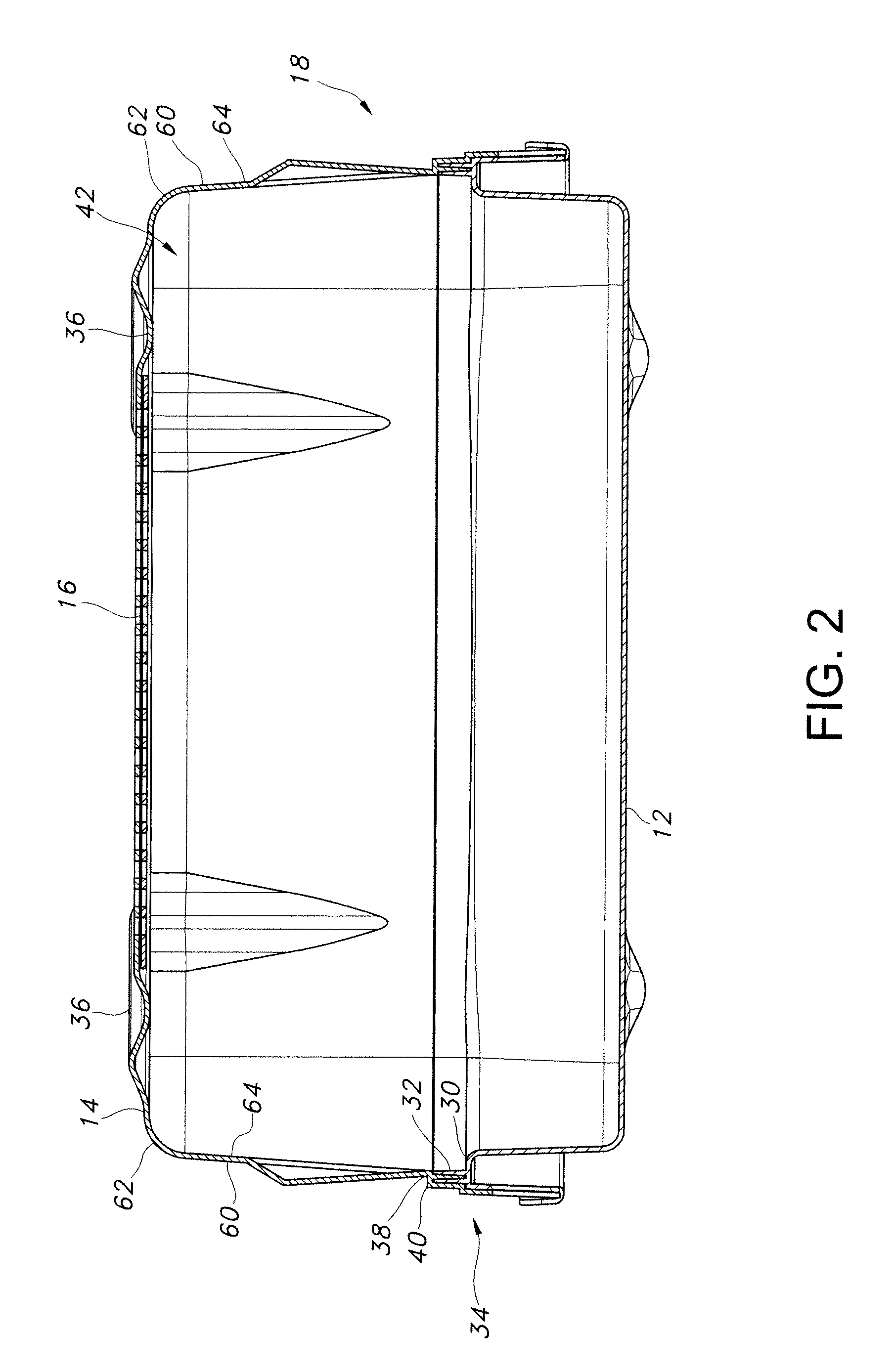Single use sterilization container
a single-use, sterilization container technology, applied in the direction of caps, liquid handling, bandages, etc., can solve the problems of generating very small tears or snags, other sources of very small tears or breaches in the barrier may develop in the wrap, and increasing the cos
- Summary
- Abstract
- Description
- Claims
- Application Information
AI Technical Summary
Benefits of technology
Problems solved by technology
Method used
Image
Examples
Embodiment Construction
[0056]The present invention provides a non-reusable, locking container for sterilizing and storing surgical materials and aseptically opening and aseptically presenting surgical materials in a sterilized condition. These sterilization containers impart an increased confidence in sterility among clinicians.
[0057]The invention will be described with reference to the following description and figures which illustrate certain embodiments. It will be apparent to those skilled in the art that these embodiments do not represent the full scope of the invention which is broadly applicable in the form of variations and equivalents as may be embraced by the claims appended hereto. Furthermore, features described or illustrated as part of one embodiment may be used with another embodiment to yield still a further embodiment. It is intended that the scope of the claims extend to all such variations and embodiments.
[0058]Referring now to FIG. 1, there is illustrated in cross-sectional view an exe...
PUM
| Property | Measurement | Unit |
|---|---|---|
| melting point | aaaaa | aaaaa |
| melting point | aaaaa | aaaaa |
| temperatures | aaaaa | aaaaa |
Abstract
Description
Claims
Application Information
 Login to View More
Login to View More - R&D
- Intellectual Property
- Life Sciences
- Materials
- Tech Scout
- Unparalleled Data Quality
- Higher Quality Content
- 60% Fewer Hallucinations
Browse by: Latest US Patents, China's latest patents, Technical Efficacy Thesaurus, Application Domain, Technology Topic, Popular Technical Reports.
© 2025 PatSnap. All rights reserved.Legal|Privacy policy|Modern Slavery Act Transparency Statement|Sitemap|About US| Contact US: help@patsnap.com



